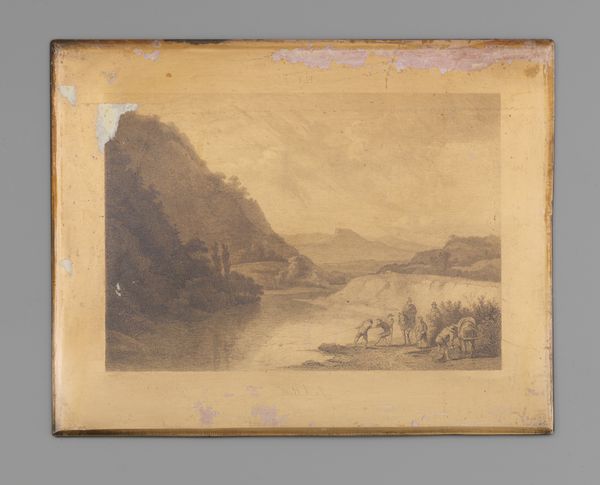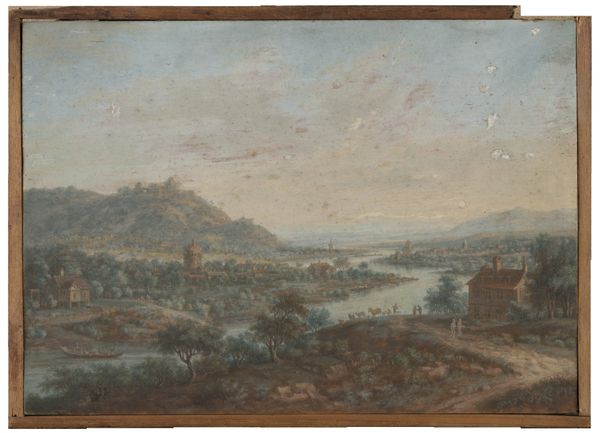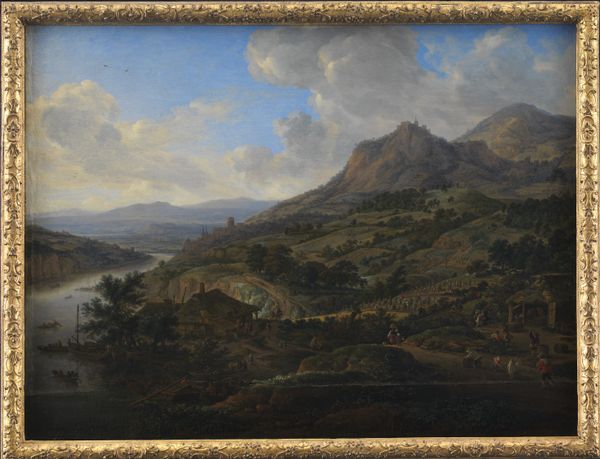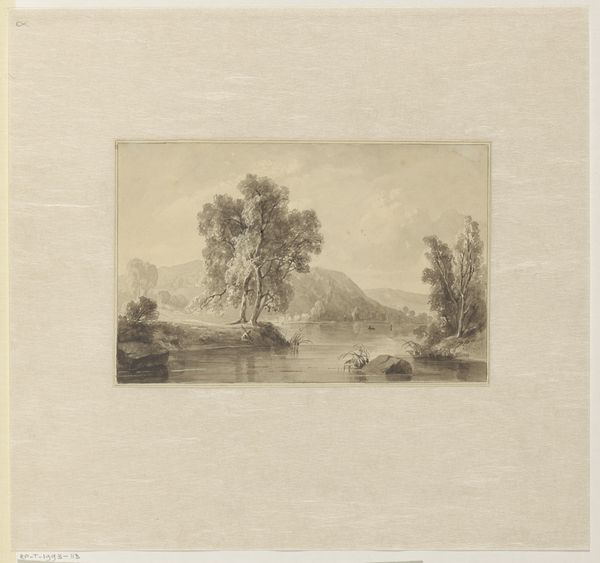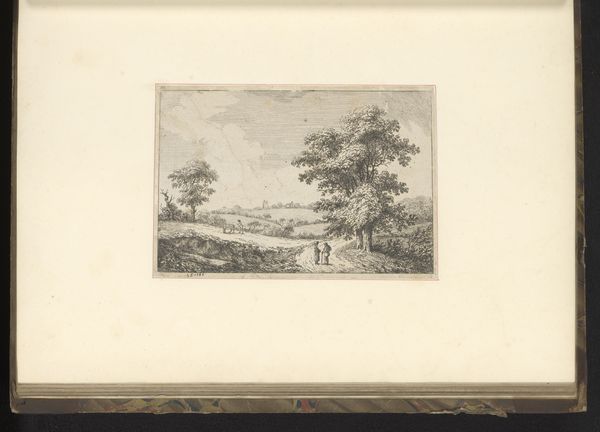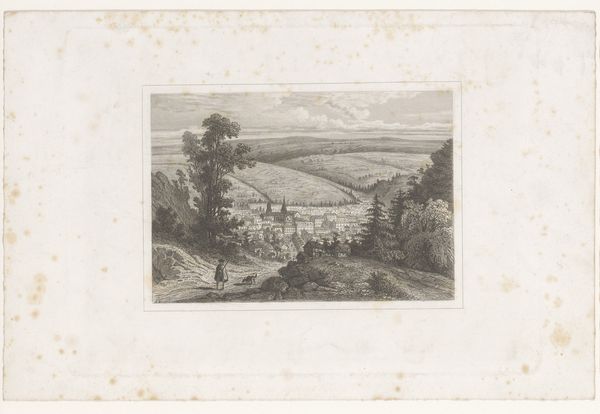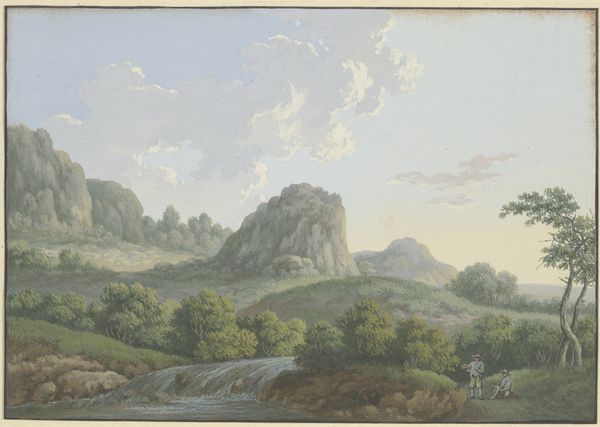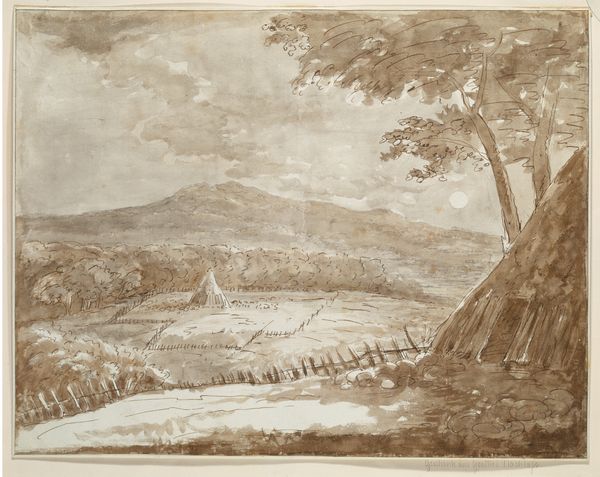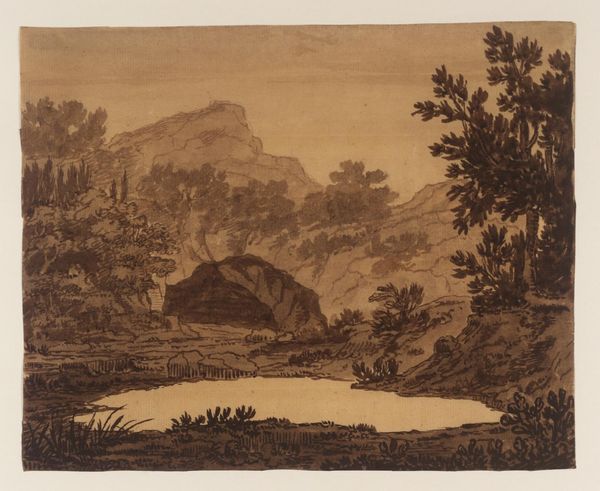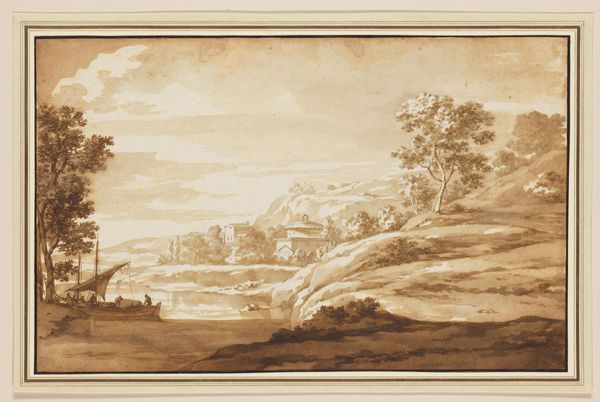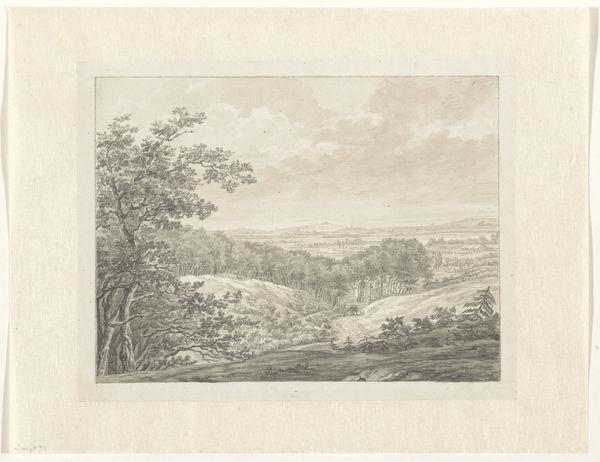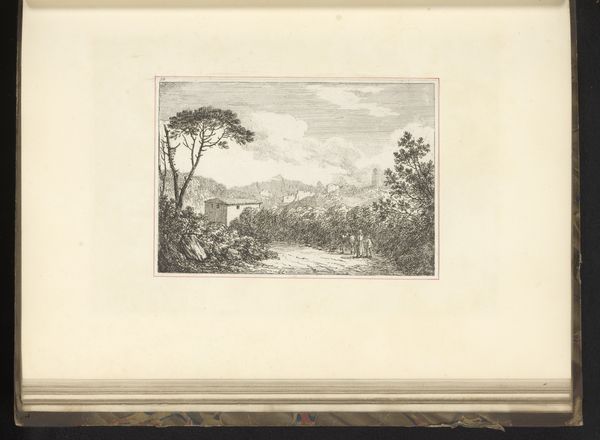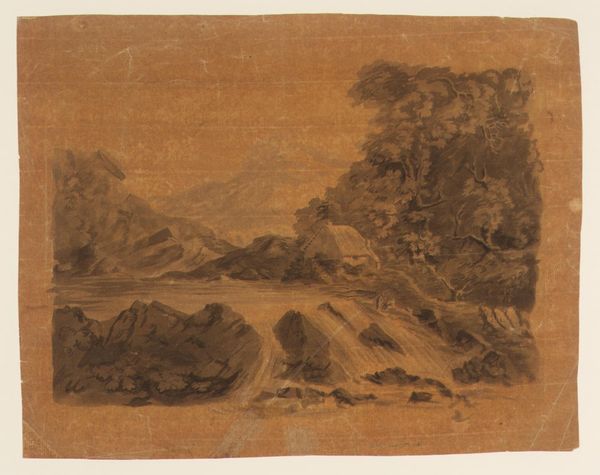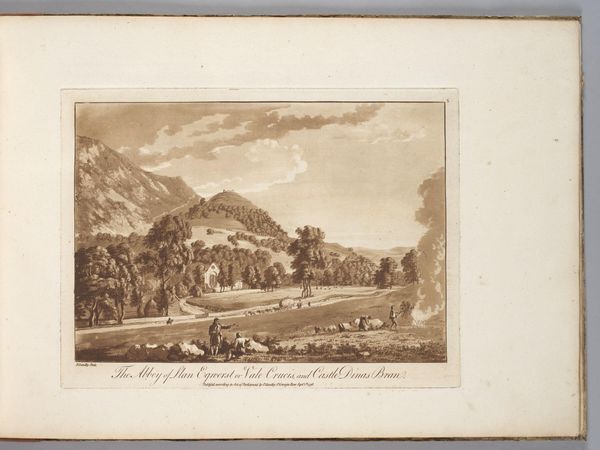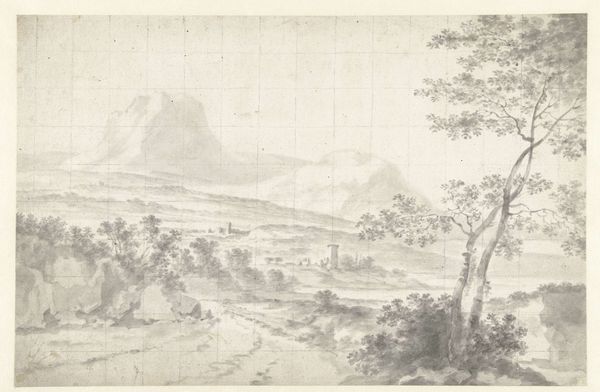
Dimensions: overall: 37.5 x 56.3 cm (14 3/4 x 22 3/16 in.)
Copyright: National Gallery of Art: CC0 1.0
George Catlin created this painting of the St. Peter's River using oil on canvas, a conventional choice for a 19th-century artist. But let's consider how even this traditional medium plays a role in shaping the image before us. Oil paint, ground from pigment and oil, allows for smooth gradations and the illusion of depth. Notice how Catlin uses these qualities to render the rolling hills and expansive sky. The very act of applying the paint, with its subtle brushstrokes, contributes to the scene's tranquil atmosphere. The sheen of the oil itself catches the light, adding to the landscape's luminosity. Catlin was devoted to recording Native American life, and so materiality is relevant to his project. His paintings could be seen as artifacts in and of themselves, produced in order to capture something of cultural value, and the labor of the hand is self-evident in the finished composition. This emphasis on materiality encourages us to view painting as a valuable form of cultural preservation.
Comments
No comments
Be the first to comment and join the conversation on the ultimate creative platform.
